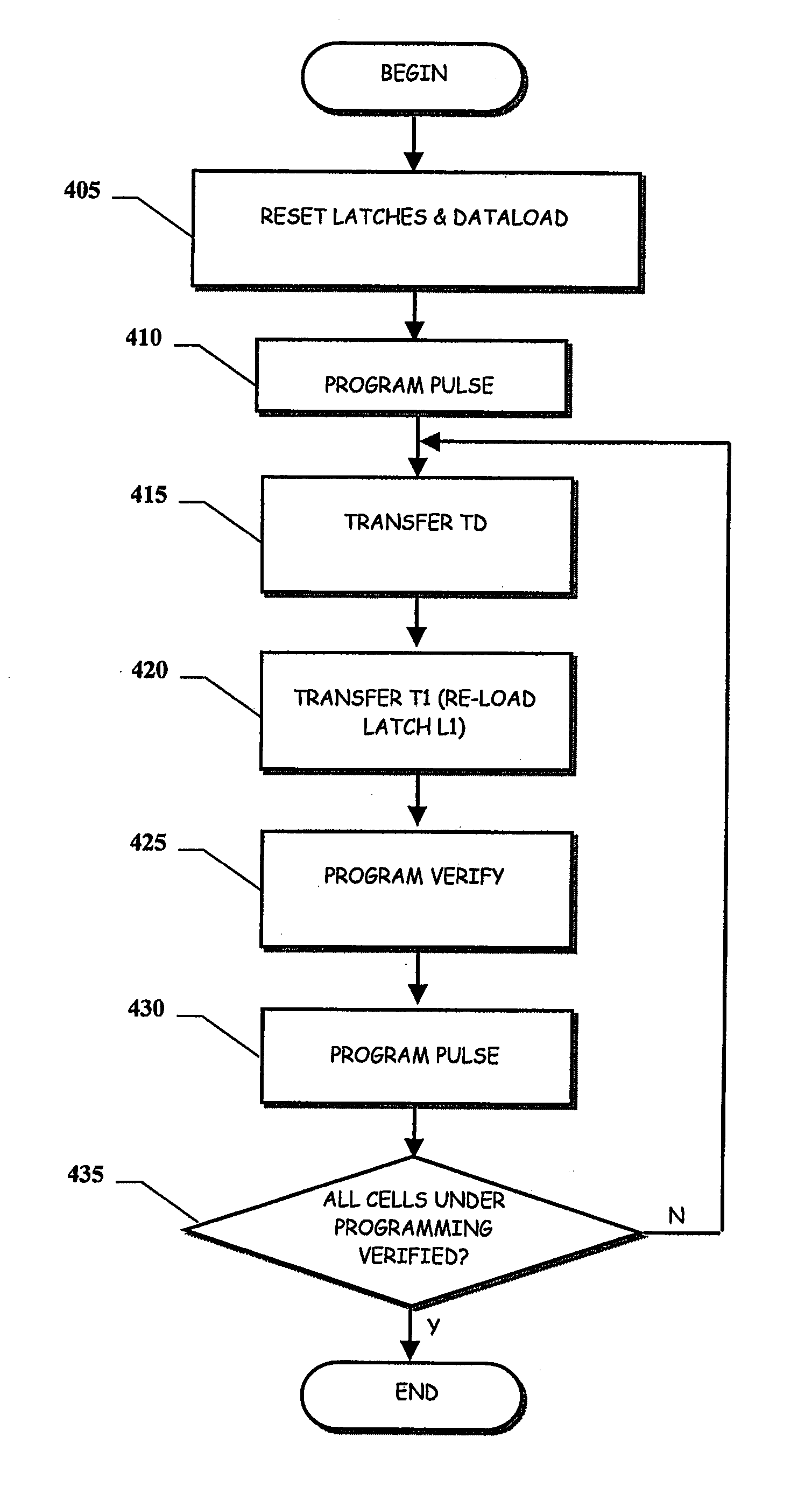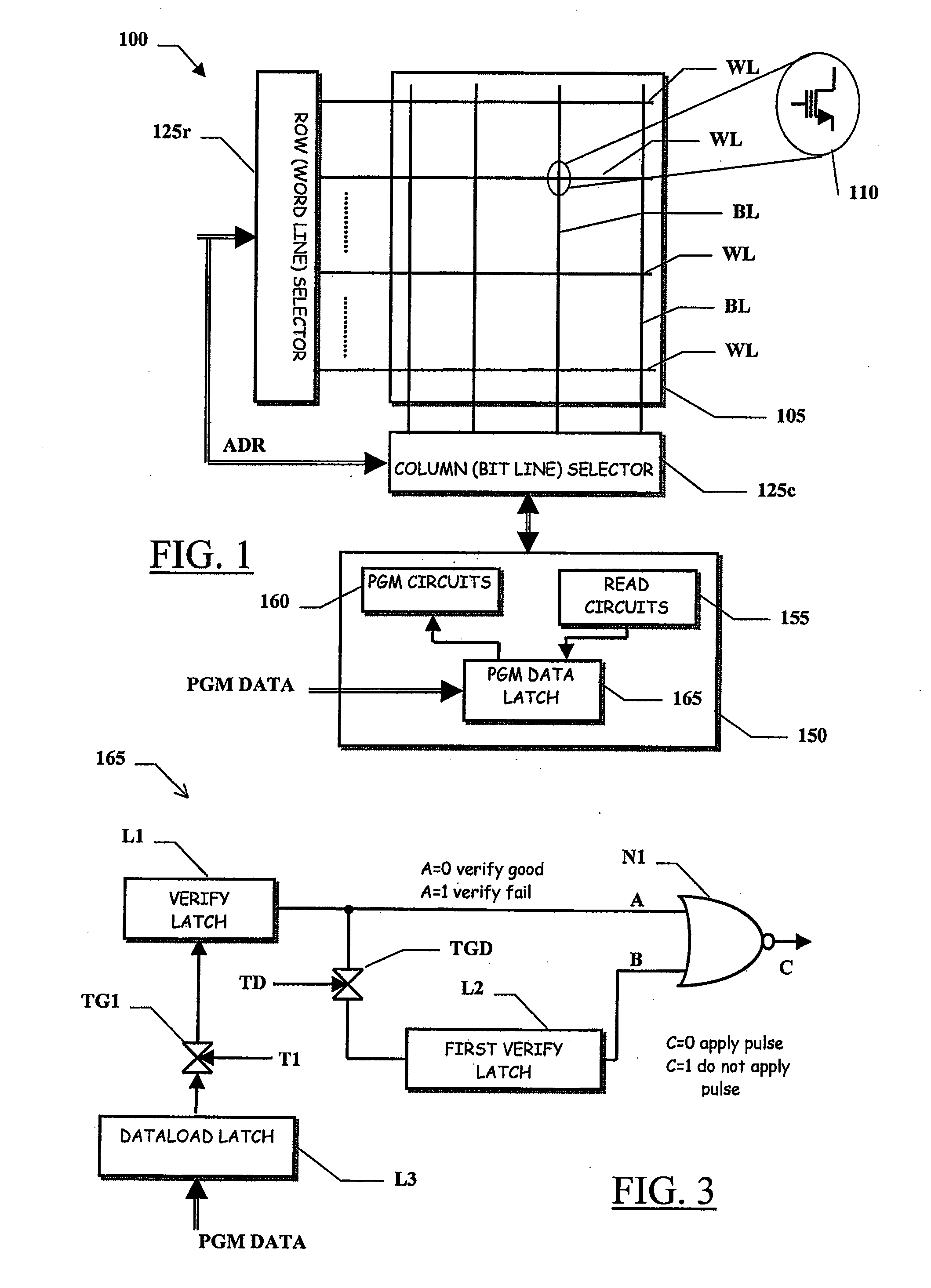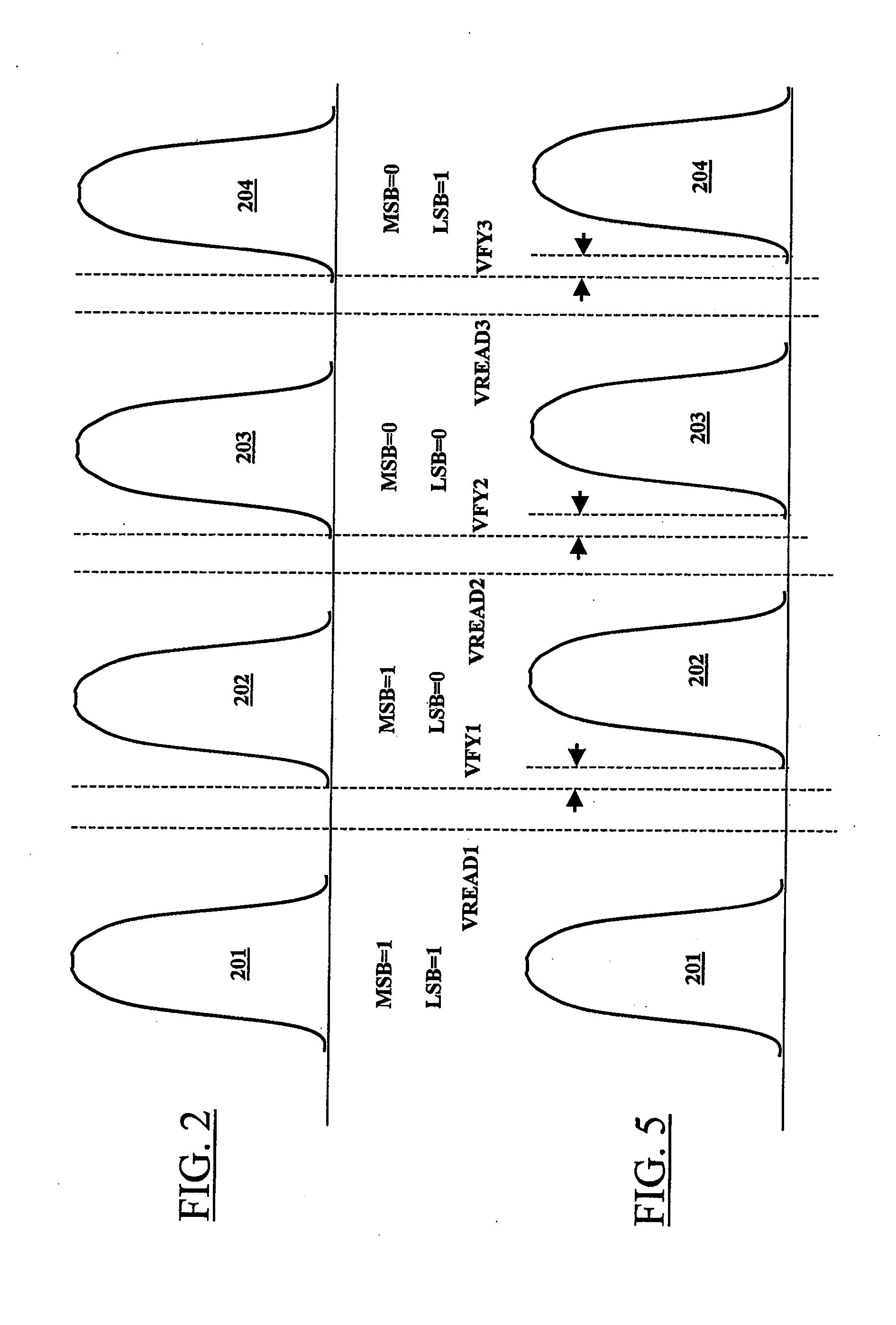Method and circuit for electrically programming semiconductor memory cells
a technology of semiconductor memory cells and circuits, applied in the field of solid-state memories, can solve the problems of generating several reference currents/voltages, no longer verifying the programming state, and generating different reference voltages/currents within the memory devi
- Summary
- Abstract
- Description
- Claims
- Application Information
AI Technical Summary
Benefits of technology
Problems solved by technology
Method used
Image
Examples
Embodiment Construction
[0042] With reference to the drawings, in FIG. 1 a non-volatile semiconductor memory, globally identified as 100, is schematically illustrated in terms of the main functional blocks; in particular, the memory 100 is an electrically-programmable, non-volatile semiconductor memory, for example a flash memory.
[0043] The flash memory 100 is integrated in a chip of semiconductor material, and includes a plurality of memory cells 110 adapted to store data; the memory cells 110 are arranged in a plurality of rows and a plurality of columns, and form a two-dimensional memory matrix 105.
[0044] Typically, each memory cell 110 consists of or includes an N-channel MOS transistor having a charge-storage element, such as a conductive, electrically-insulated floating-gate electrode adapted to be charged by electrons.
[0045] The flash memory 100, and particularly the memory matrix 105 may either have a NOR architecture or a NAND architecture, the specific architecture of the flash memory 100 bein...
PUM
 Login to View More
Login to View More Abstract
Description
Claims
Application Information
 Login to View More
Login to View More - R&D
- Intellectual Property
- Life Sciences
- Materials
- Tech Scout
- Unparalleled Data Quality
- Higher Quality Content
- 60% Fewer Hallucinations
Browse by: Latest US Patents, China's latest patents, Technical Efficacy Thesaurus, Application Domain, Technology Topic, Popular Technical Reports.
© 2025 PatSnap. All rights reserved.Legal|Privacy policy|Modern Slavery Act Transparency Statement|Sitemap|About US| Contact US: help@patsnap.com



